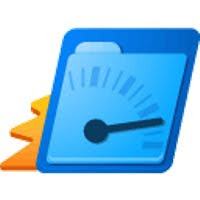
Digital marketing tips and advice.
July 28, 2011
a href="http://2.bp.blogspot.com/-0JBJrwpf500/TjGUyYcZW9I/AAAAAAAAAIg/uBcKhsP7IMs/s1600/Page%2BLoad%2BSpeed.jpg" onblur="try {parent.deselectBloggerImageGracefully();} catch(e) {}"> Website page load speed is a critical element to online rankings and search engine optimization. SEO experts and teams have several different methods of decreasing page load speed by decreasing the amount of HTTP requests (server requests) and RTT (Round Trip Time) back and forth between a site and its server. In addition, understanding parallelization (ordering JS/CSS correctly) and making these scripts external instead of inline are recommended.
Website page load speed is a critical element to online rankings and search engine optimization. SEO experts and teams have several different methods of decreasing page load speed by decreasing the amount of HTTP requests (server requests) and RTT (Round Trip Time) back and forth between a site and its server. In addition, understanding parallelization (ordering JS/CSS correctly) and making these scripts external instead of inline are recommended.
July 27, 2011
Google released “+1” in June as a method for web users to essentially give their seal of approval to individual websites. Sites that accumulate many will have favorable search engine result visibility. As +1 challenges the traditional dynamics of search engine optimization, Kenneth C. Wisnefski, founder and CEO of WebiMax, discusses the potential manipulation and negative influence this may cause the search industry.
Read StoryJuly 25, 2011
July 15, 2011
 Ever since Groupon filed their S-1 filing with the SEC back in early June, investors and social media experts have been wondering when exactly the official IPO date will be released. Groupon, the “deals and discounts” website, was offered a $6 billion takeover from Google in December 2010, clearly rejecting it because they feel as though they can grow tremendously in the online deals arena.
Ever since Groupon filed their S-1 filing with the SEC back in early June, investors and social media experts have been wondering when exactly the official IPO date will be released. Groupon, the “deals and discounts” website, was offered a $6 billion takeover from Google in December 2010, clearly rejecting it because they feel as though they can grow tremendously in the online deals arena.
July 8, 2011
By now, just about everyone’s heard of social media. After all, even the Pope has a Twitter account. But what about social SEO? With the introduction of Google Plus, social SEO has become an industry buzz word—and for good reason.
Read StoryKen Wisnefski is a seasoned web entrepreneur and a frequent contributor to news outlets and business publications. Ken’s vast knowledge of how to make online businesses succeed has made him a sought after consultant from businesses wishing to improve their online initiatives. Contact pr@webimax.com to collaborate!
